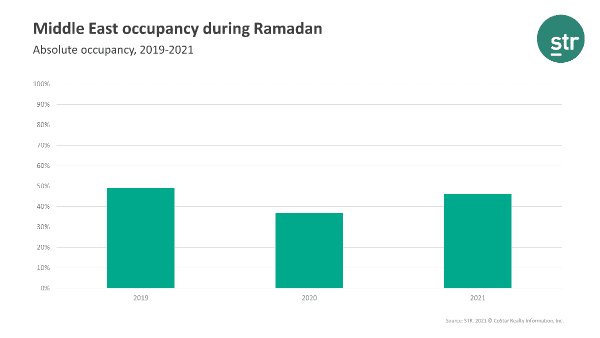 The Middle East reported Ramadan hotel occupancy levels that were improved from last year and only slightly below the 2019 comparable, according to the latest data from STR.
The Middle East reported Ramadan hotel occupancy levels that were improved from last year and only slightly below the 2019 comparable, according to the latest data from STR.
“Muslims worldwide have marked Ramadan in decidedly different ways over the last two years, but for the Middle East, there is a sense of some normalcy as vaccinations expand and domestic restrictions are lifted,” said Philip Wooller, STR’s area director for Middle East & Africa. “Key markets in the region have been outperforming their global peers, and near-normal occupancy levels for the holy month are another good indicator for the industry moving forward.”
The Middle East’s highest Ramadan occupancy level (53.1%) came during the week of 10-16 May. Key Middle East markets have also showed continued week-to-week performance improvement due to Ramadan and Eid al-Fitr. During that same week, Sharjah (67.2%), Doha Centre (65.5%), Abu Dhabi (63.6%) and Al Khobar (63.5%) experienced the highest occupancy levels in the region. Jeddah (58.6%) and Dubai (59.7%) also showed continued week-to-week performance improvement.

Further information regarding Ramadan and Eid al-Fitr impact on Middle East hotel occupancy can be found here.
Join us live on Wednesday, 26 May at 11:00 a.m. (Dubai time) as STR’s outline the latest data and insights on hotel performance in key markets around the region. Register here.
All of STR’s COVID-19 analysis can be found here.


















